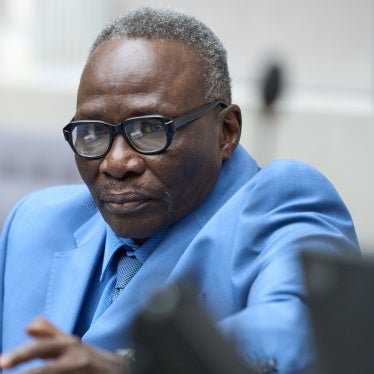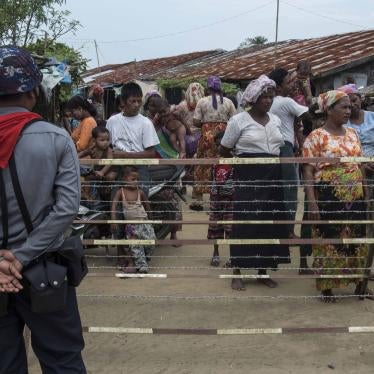Human Rights Watch is grateful for the opportunity to address the Committee on Budget and Finance of the Assembly of States Parties to the Rome Statute, and we appreciate the Committee’s openness to take onboard civil society’s views.
Human Rights Watch is not an auditor of the court’s finances, and we do not engage the Committee and the Assembly of States Parties to simply endorse the court’s proposed budget. Rather we pursue two interconnected goals:
- To call states parties to account for the financial investment needed to make their commitment to this court a more effective reality; and
- Where we have expertise, to offer our observations to contribute to a budget process that achieves the resources necessary to support the full delivery of the court’s mandate.
Human Rights Watch has been monitoring the court since its inception and we continue to be concerned about the ongoing mismatch between the court’s workload and the resources available to it.
We have been glad to see the court asking for substantial increases to its annual budget over the last three years, in recognition of the significant uptick in its workload and the challenging environment in which it is operating. Another positive development has been the decision by some states parties who previously supported a zero nominal growth approach to the court’s budget to finally move away from that position. While strict budgetary discipline is required, zero nominal growth was never appropriate for this still-evolving institution and should not resurface.
At the same time, however, states parties have responded to the court’s budget proposals for 2022 and 2023 with nominal increases, which were much lower than what the court requested – and lower than what the Committee recommended – and that, in reality, barely covered costs associated with inflation. We are concerned that this trend is contributing to a further closure of the space for honest discussion between the court and states parties around the court’s resource needs. In our view, the Committee’s independent, expert technical assessment and recommendations can play an important role in creating the conditions necessary for this type of dialogue.
In its budget proposal for 2025, the court outlined the complexities of its operational environment: a number of situations currently under investigation in the context of ongoing armed conflicts; limited cooperation; increased security concerns following last year’s cyberattack, as well as intensified politicized threats and attacks against the court and its officials; the withdrawal of some United Nations peacekeeping missions that have been supporting the work of the court; and ongoing significant inflationary pressure.
Against this background, the court decided to focus its budget request for next year on some critical priorities, such as security, tracking of fugitives, investigative activities, cooperation, institutional efficiency, and workplace culture. While these are key areas of investment, the budget proposal also reveals ongoing resource constraints that severely affect its delivery of justice, including by limiting its engagement with affected communities. The court continues to operate in the context of chronic underfunding, which has forced an overly selective approach to its work.
To address this long-standing problem, in addition to adopting an adequate annual budget for 2025 to support the work of the court across situations, states parties should take steps to ensure the sustainability of the court’s resources.
We have previously shared with the Committee our concerns around the issues of sustainability and independence that the ongoing use of voluntary contributions, including seconded personnel, raise. While the court’s proposal aims to clarify the relationship between the regular budget and extrabudgetary resources, more information – particularly on the allocation of the resources in the Office of the Prosecutor’s Trust Fund for Advanced Technology and Specialized Capacity – should be made public to increase transparency and support the budget negotiations. At the same time, states parties should not conflate voluntary contributions and the regular budget. They should distinguish between the different purposes they serve and avoid using the voluntary contributions made to date as a reason to reject increases in the budget for 2025. Ultimately, the best way to ensure that the court has adequate and sustainable resources to fulfill its mandate, is for states parties to strengthen its regular budget.
We also raised concerns about the contingency fund. We fully agree with the Committee’s assessment during its 44th session that the Assembly’s decision to exceptionally use the expected cash surplus for 2022 to replenish the fund is not a sustainable solution. We look forward to further reflections on how to improve the sustainability of the contingency fund, including through a potential mechanism for its automatic replenishment.
Finally, we continue to see a need for discussions among the court, states parties, and other relevant stakeholders about the long-term investment needed to ensure the effective delivery of the court’s mandate. In our view, the declaration by participants at last year’s commemoration of the 25th anniversary of the Rome Statute in Siracusa – which committed to further dialogue to achieve a shared vision for the court – is a vehicle to advance these discussions.







